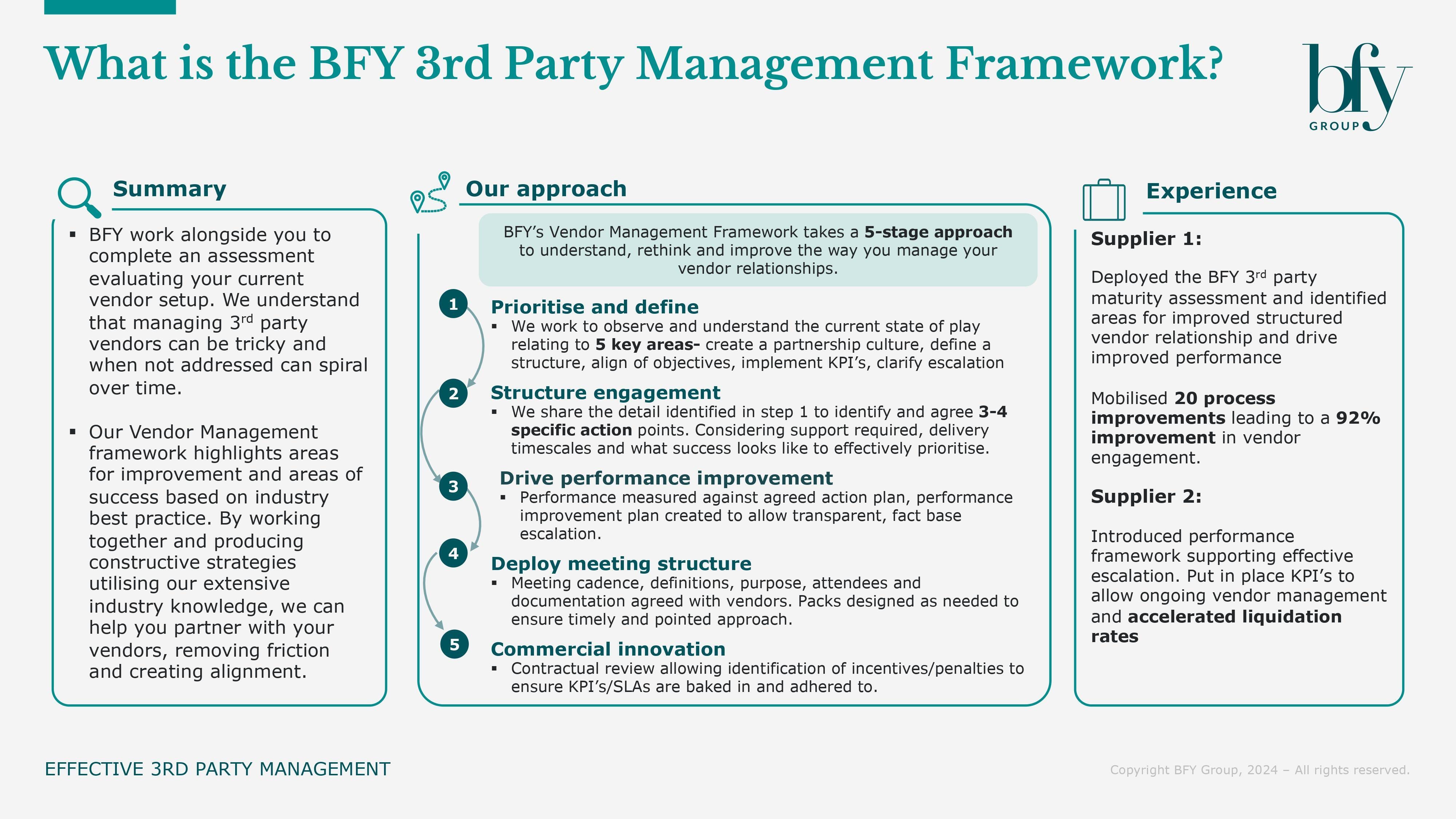Energy suppliers face real opportunities to optimise their strategy for Debt Collection Agencies (DCAs).
Domestic debt reached another all-time high in Ofgem’s latest data, with our previous update calling for holistic improvements to customer support.
This means higher standards on two fronts – internally, through a focus on enhancing debt management maturity; and externally, by effectively managing third party relationships in the debt journey. We recently shared key questions from our third-party management framework here, and we’ve expanded on this below with three practical steps, to help you maximise results from your DCA strategy.
Engaging customers through tailored journeys is crucial to mitigate growth in unsecured debt, and suppliers’ application of DCAs plays a key part in achieving this. Once upon a time, this was as simple as a single placement on a set day in the collections journey. But with successful outcomes now at a premium, a step change in performance is on offer for those that optimise the role DCAs play for each of their customers.
1) Assess DCA panel health to drive placements and enhance performance
A supplier’s panel will typically be selected based on what they deem a good brand partnership, along with the DCA making a compelling case as to the ROI they will deliver.
Often diversified and excelling in their own unique fields of work, understanding the true impact and performance of your panel can be tricky, with their self-reporting helping to provide assurance that positive outcomes are being generated.
But beyond that, what steps are you taking to understand who is delivering what you really need, where you really need it?
A one-off exercise to assess and score your panel, across customer segments and outcomes (e.g. aged/vulnerable, ease of contact/propensity to pay), will provide you with a simple view of which DCAs are adding value, where they’re adding it, and at what price.
When assessing the effectiveness of each DCA, look at how their performance stacks up across each day of the placement window to see which of their treatments are effective, and whether placement durations are fit for purpose.
Doing this will help maximise in-house collections and drive placements, whilst giving you the insight needed to performance manage any of the panel that are under-performing.
2) Analyse outcomes to enable exhaustive treatments
Although placement results will improve based on the changes driven by your assessment, ongoing analysis of all (positive and negative) outcomes is needed to refine how you use DCAs to compliment internal treatments.
Dynamic tailored journeys for each customer should be the aspiration, but given that will take time, introducing placement A/B testing is beneficial, to see how different customer types respond to DCA outcomes.
There are no hard and fast rules on what to test against, with lifecycle, region, and previous indebtedness just a few options to consider.
You’re likely to see strong themes emerging very quickly, helping inform your future DCA strategy, as well as improvements to internal treatments, reducing the need for future placements.
Analysing unsuccessful outcomes is just as important, and building out case studies of the end-to-end journey a customer has been through can be a powerful tool for driving meaningful change.
The key question is - are you really satisfied with the pace and exhaustiveness of your treatment paths?
3) Promote a results-focussed culture for change that lasts
Above all else, managing your DCA panel should be about a relentless pursuit of improved outcomes for customers, and in business results. If you’re not constantly testing changes to seek improvements, it’s a sure sign that you’re accepting ordinary performance, which is unlikely to prevent growth in unsecured debt.
Those accountable should be challenging their teams to get closer to DCA performance and create a pipeline of changes that can be tested at regular intervals.
An example to facilitate this could be creating a forum for leaders to showcase the work they’re doing, and the changes being made based on results. Encouraging an open-minded approach is key to drive creativity in this forum, while providing healthy challenge on the quality of the change pipeline.
One point remains clear in the face of rising debt - standing still isn’t an option for suppliers.
Optimising your DCA strategy is an overarching objective of our third-party management framework. It adopts a five-step approach to improving vendor performance, with proven results for suppliers, including a 92% improvement in vendor engagement.

A combined focus on effective third-party relationships, and internal improvements, is key to drive the engagement needed in today’s climate, where suppliers need to feel confident that they’re exhausting all potential routes of contact, for the varying needs of customers.
If you recognise the challenges in this article, and you’re interested in optimising your DCA strategy or internal debt treatments, contact Rachel Littlewood.
Rachel Littlewood
Director
Rachel leads our operational and financial turnaround engagements, helping to solve complex operational challenges while maximising commercial performance and customer outcomes.
View Profile

